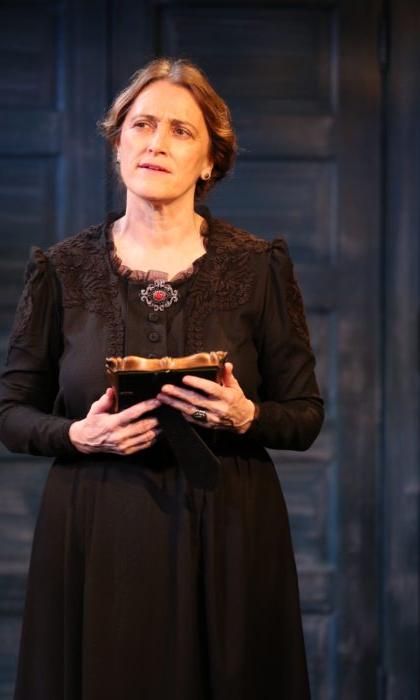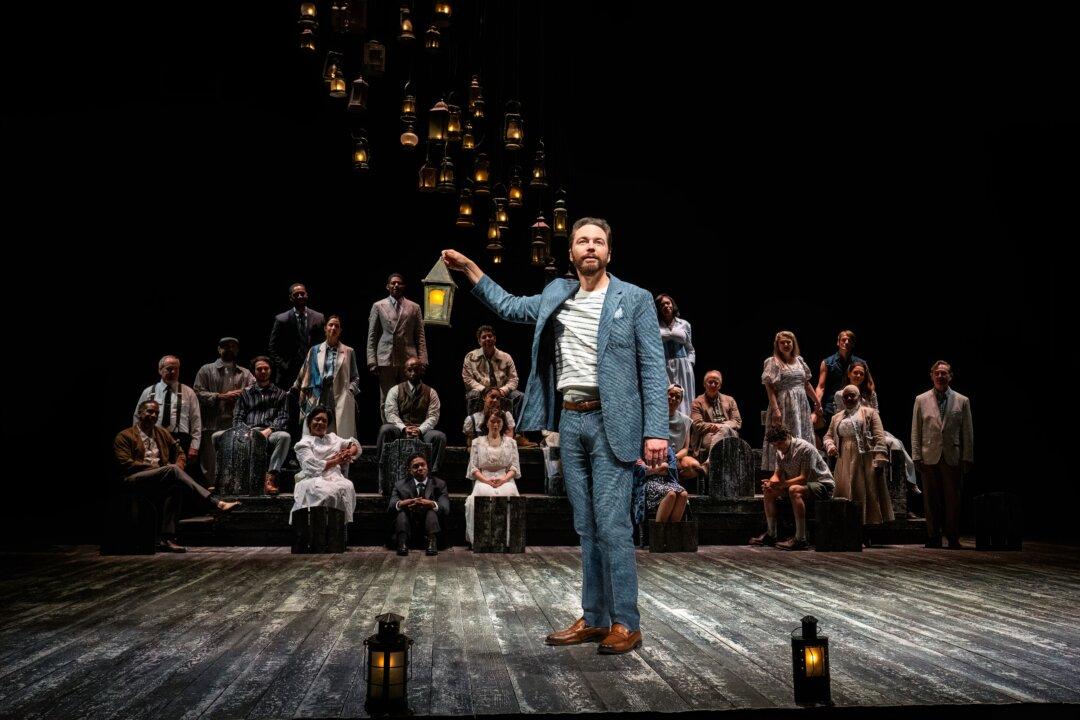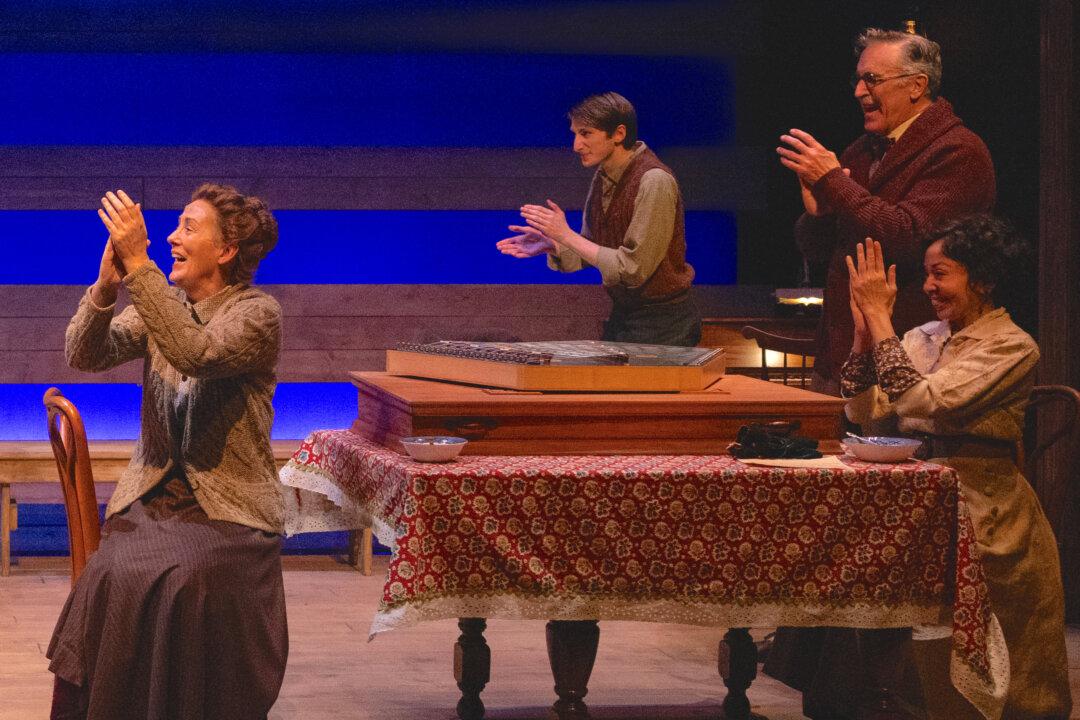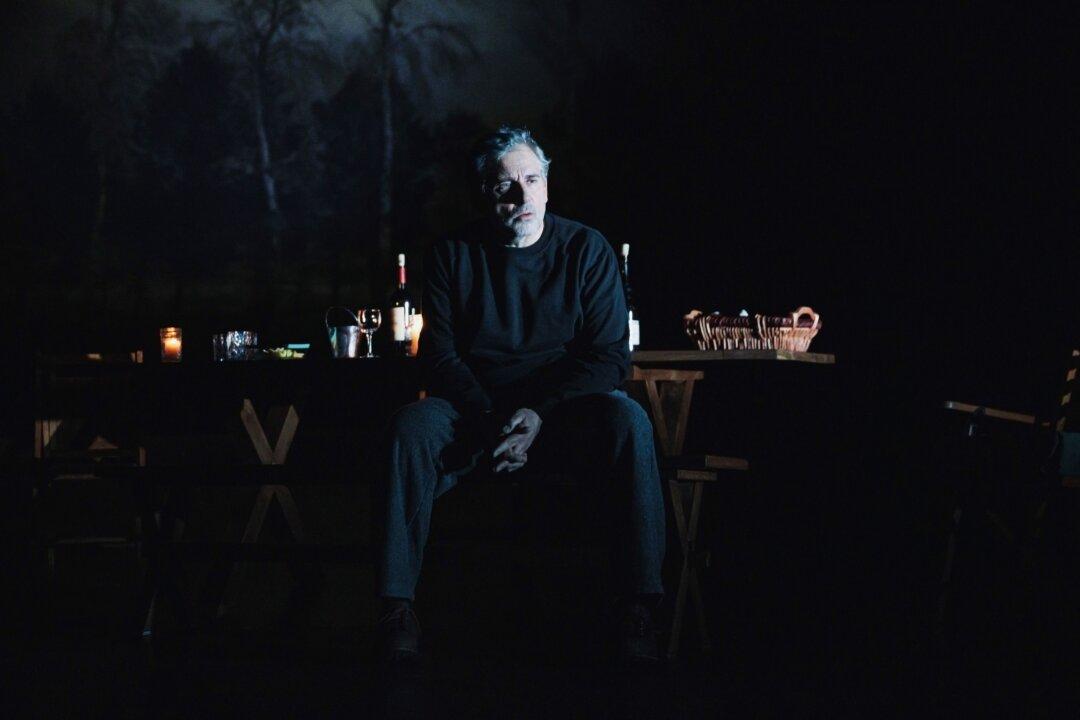NEW YORK—Lady Augusta Gregory is a famous name in theater, but not much is generally known about her. Director Ciaran O'Reilly has set out to right that wrong by creating a potpourri of elements that bring the lady and her early 20th-century achievements to the fore.
Raised comfortably in Ireland, she went on to marry a man 35 years older than herself, because they shared the same interests: literature and the arts.
They traveled widely, in far-off, exotic places, finally settling down in Gregory’s elegant estate of Coole Park in Galway.
They had a beloved son together, who sadly died in combat during World War I. But after her husband died, Lady Gregory followed her interests in theater. At Coole Park, she was able to gather around her young, as yet untried, play writing talents. These young men were to later constitute the cornerstone of the new Irish theater: names such as William Butler Yeats, John Millington Synge, and Sean O'Casey.
She is joined by three other stalwarts of the Irish Rep company: the valuable and versatile Terry Donnelly, the vital and energetic John Keating, and the elegant James Russell. These last three play all the other roles who constitute the important figures in Lady Gregory’s life.
After much struggle and discussion, Lady Gregory co-founded with Yeats what has come to be known as one of the giants of theatrical organizations: the Abbey Theatre, which still exists today. In fact, Terry Donnelly of this cast boasts the Abbey among her ample credits.
Notably, the Abbey produced J.M. Synge’s “The Playboy of the Western World,” which, in 1911, it brought to the United States. The Abbey went on to produce O'Casey’s major works, including “The Shadow of a Gunman,” “Juno and the Paycock,” and “The Plough and the Stars.”
Lady Gregory’s Plays
This production boasts unique touches. At intermission, cast members pass through the audience handing out small portions of the type of cake that Lady Gregory would serve on the Abbey’s opening nights.Another plus is the inclusion of two of Lady Gregory’s own plays. She began writing at the age of 50 and penned 40-odd plays.
Included are “Workhouse Ward,” which deals with two old codgers in a poorhouse, one of whom refuses to move out to be with his sister, as she will not take in the two of them. These ever-quarreling frenemies prefer to remain together rather than face the loneliness that separation would bring.
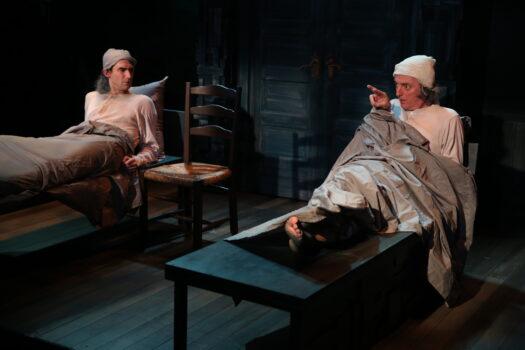
The second play, “McDonough’s Wife,” deals with Mr. McDonough’s wife dying in childbirth. When the townspeople refuse to honor her remains (as she is considered an outsider), McDonough insists on paying her the greatest respects possible, at last atoning for his ignoring her while she lived.
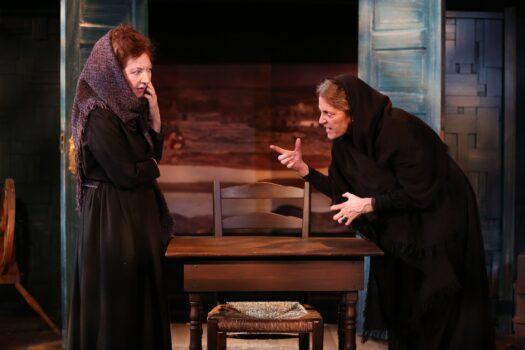
In addition to the strong cast and Ciaran O‘Reilly’s attentive direction, it’s apparent that for all involved, including set designer Charlie Corcoran, costume designer David Toser, and lighting designer Michael O’Connor, this production is a labor of love.
And, without question, it has brought to fuller attention the achievements of Lady Augusta Gregory.

